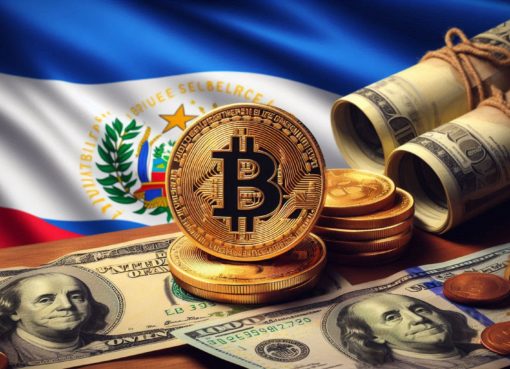The TrueFi protocol has only been around for a couple of months and its arrival is already being felt across the DeFi landscape. Since the beginning of January, the platform has steadily been climbing the rankings chart on DefiPulse, already in the 24th spot after 2 months since launch, moving past long-standing protocols like Cover, bZx, Gnosis and dForce.
Another metric that quite clearly showcases TrueFi’s ever-increasing market clout is the fact that since Jan. 1, the platform’s total volume locked (TVL) has increased by over 38%, rising from $29.46 million to just over the $48 million mark (as of February 11).
So what exactly is TrueFi?
In simplest terms, TrueFi is a specialized DeFi solution allowing vetted borrowers to request capital with no collateral requirements, while rewarding the lenders that pool their capital together to make these loans possible with competitive and stable returns.
To make this possible, TrueFi empowers holders of the native TRU token to have a say in the ‘creditworthiness’ of every loan being issued on TrueFi. By making use of TrueFi, TUSD lenders have the option of earning lucrative APYs on their stablecoins while also farming TRU, making this offering one of the most attractive DeFi ecosystems in the market today.
If for some reason, the above-stated description seemed a bit too complex for your taste, you can think of TrueFi as simply being a platform that enables users to acquire uncollateralized loans as well as deploy their TRU tokens for purposes such as staking and voting on loan requests.
How easy is it to use TrueFi?
So how does one lend on TrueFi? Fairly easily, thankfully. To begin, lenders deposit TUSD into the TrueFi lending pool, which is then put to work in loans to approved borrowers or pushed to the Curve pool, always maximizing returns for lenders. Lenders benefit from a competitive base APY paid out in TUSD and a serious boost from farmed TRU. Lenders can always see exactly how the capital in the lending pool is used, setting a new bar for transparency against centralized players like Nexo or Celsius.
In order for borrowers to loan out capital, they are required to submit a detailed proposal clearly explaining their creditworthiness and intentions for their loan, including the amount required, how this money may be used, and the terms of the loan such as length and the interest rate offered.
Each loan application is made to go through TrueFi’s native pool smart contract that assesses various risk parameters as well as counts the total number of yes/no votes issued by TRU Stakers in order to approve or reject the request.
Once a loan has been issued, borrowers are required to pay back the principal as well as applicable interest before the loan term expires, failing which they are subject to legal action carried out by TrustToken Inc for now, but eventually to be taken up by a foundation acting on behalf of TRU holders in a more decentralized fashion.
TrueFi’s performance so far
Since its inception, TrueFi’s progress has been quite remarkable. For example, during the month of December, the platform’s first loan worth $5 million was issued and repaid back on time by Alameda Research – the largest loan of its kind on DeFi. Subsequently, 4 other loans of around $12 million were issued, of which two (amounting to $7.5 million) have already been cleared.
To maximize consumer trust, TrueFi has made all of its operations completely transparent. For example, the status of all live/closed loans can be is always visible on the dashboard, as are the borrowers taking them out.
Furthermore, TUSD is the world’s only stablecoin that guarantees a real-time 24/7 attestation from a top 25 American accounting firm Armanino LLC. This effectively eliminates any room for manipulation of the currency. If that wasn’t enough, TrueFi’s collateralization data is reported on-chain in real-time via the ChainLink network.
From a functional standpoint, TrueFi’s ecosystem has undergone a few upgrades, with one of the most important ones being the deployment of an all-new on-chain governance system which basically mirrors the framework being used by Compound. Not only that, over the course of January, the platform’s core dev team has sorted a number of front end bugs as well as smart contract issues – related to TFI-LP slippage – that had been affecting the platform.
A Taste of What’s to Come… TrueFi v2
As the TrueFi team constantly tries to one-up itself, it should be noted that v2 of the platform is currently in the works. The upgrade will seek to maximize the functional utility of the core TrueFi protocol, essentially revamping the way in which lending is carried out within the ecosystem. Not only that, it will also seek to modify several other aspects – related to value accrual, decentralization, automation – of the ecosystem.
The aforementioned upgrades will be rolled out in phases as well as in line with the unlocked tokens entering circulation. Also, as the envisioned TrueFi roadmap evolves, the platform will undergo a number of additional updates, all of whom will be put through a community vote prior to implementation.
Notable moves made
December
On the 16th, TUSD was the first stablecoin to be made available on the Emin Gun Sirer founded Avalanche blockchain. Similarly, during the last week of the month, TRU tokens were added to Sushiswap’s Onsen incentive program, thus allowing the platform’s TRU/ETH liquidity providers to stake their SLP tokens in return for SUSHI rewards.
January
On January 14 a total of TRU markets were added to the popular cryptocurrency exchange FTX. This news was followed by Poloniex also listing four TRU trading pairs – TUSD/USDT, TUSD/USDC, TUSD/ETH, and TUSD/BTC.
Around a week later, TRU made its way onto Binance followed by Gate.io (in the form of a TRU/USDT perpetual contract trading).
Other upcoming developments to watch out for
As per TrueFi’s roadmap, the coming few weeks and months will see the team investigating the possibility of a TFI-LP metapool on Curve.fi which will allow for enhanced liquidity of TFI-LP tokens. Not only that, liquidity providers to this new pool will be able to earn CRV rewards and trading fees as well as be able to acquire a steady stream of interest from their TFI-LP tokens.
Another landmark that will be met over the course of the next 30 odd days by the TrueFi dev team is the total decentralization of the platform, such that any upcoming protocol upgrade/modifications will only be possible via the explicit consent of TRU holders only. To be a bit more specific, once this wheel is set in motion, the TrustToken team will lose any sort of ability to independently initiate changes to the TrueFi ecosystem.
Lastly, the team wants to automate all actions – related to CRV claims, closing out of loans, etc – so as to remove the possibility of human intervention/error from the system.




